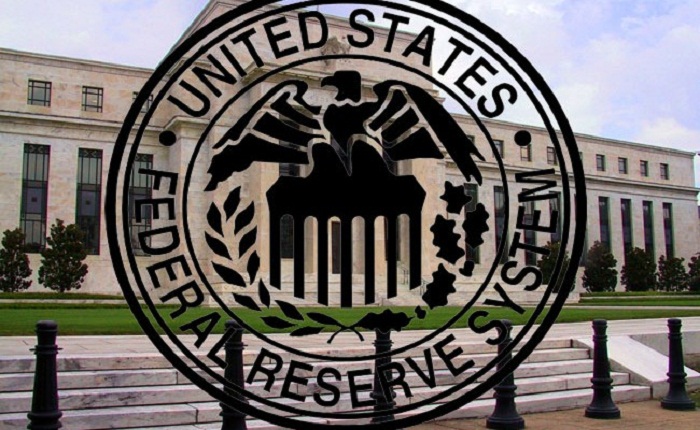Extraordinary times call for extraordinary measures, which in the context of the COVID-19 pandemic means additional fiscal stimulus of the kind promised by US President Joe Biden. To alleviate sustainability fears, the Federal Reserve must prepare to expand its balance sheet and monetize the deficit.
The unprecedented fiscal stimulus unleashed in the United States since the start of the COVID-19 pandemic calls for commensurate additional monetary stimulus. The restrictions imposed to control the spread of the coronavirus have caused the deepest global recession since World War II.
Government-imposed lockdowns have varied in duration and intensity, and this is likely to continue as the medical threats posed by the pandemic evolve. But there have also been wide variations in the degree to which privately imposed and enforced behavioral restrictions have complemented and reinforced the publicly mandated ones. In any case, the fact that the current recession is largely self-inflicted provides grounds for optimism about the speed of the recovery that we can expect once the public-health disaster is under control.
Recall that, although the virus was identified in January 2020, the scale and scope of the coming economic damage did not become clear until March. In the first quarter of 2020, real (inflation-adjusted) GDP in the US decreased at an annualized rate of 5%, but then plummeted by 31.4% in the second quarter. In the third quarter, after lockdowns had been relaxed and the private sector had learned to cope better with the new realities, US real GDP bounced back at a respectable 33.4% annualized rate, though it remained far short of the level expected at the start of the year. The last quarter is likely to have produced further weaknesses (official data are not yet available), as will the first quarter of 2021, owing to the recent mutations of the virus and the attendant return of restrictions.
This picture of an incomplete recovery is further supported by labor-market data, which hint at additional economic weaknesses to come. According to the US Bureau of Labor Statistics, the unemployment rateas of December 2020 was 6.7%. That is certainly better than the 14.8% rate recorded in April 2020, but it is well below the 3.5% figure reported last February. The loss of 22 million jobs between March and April 2020 underscores both the breathtaking damage caused by the lockdowns and the potential speed of recovery; indeed, between April and December 2020, 16 million people had already returned to work.
In large part, this is because the US fiscal response to the pandemic has been little short of staggering. Before the $2.2 trillion Coronavirus Aid, Relief, and Economic Security (CARES) Act last March, an additional $200 billion of stimulus measures were approved that same month. Then, in December, a $900 billion pandemic aid bill was signed into law. And now, Joe Biden’s administration is pushing for a $1.9 trillion package.
The Biden plan would bring the US pandemic fiscal response to $5.2 trillion, which is about one-quarter of US annual GDP. For comparison, the primary fiscal-policy response to the global financial crisis, the American Recovery and Reinvestment Act of 2009, totaled around $800 billion.
While that $5.2 trillion figure will likely be administered over the course of two or more years, stimulus amounting to 12% of GDP per year still should raise concerns both about fiscal sustainability and crowding out interest-rate-sensitive private expenditures. Thus, while proceeding with additional fiscal stimulus is still the right thing to do, it must be accompanied by the appropriate monetary policy. Simply put, the additional federal fiscal deficits must be monetized.
To be sure, the US Federal Reserve has done a great job so far. Since March 2020, its balance sheet has expanded by 70%, from $4.2 trillion to more than $7.4 trillion, while its securities (public and private) held outright have increased from $3.9 trillion to $6.8 trillion. And on the liability side, most of the increase has taken the form of larger reserve balances (deposits of depository institutions) and a larger Treasury balance.
But the Fed now must prepare to buy up the federal debt issued by the Treasury to fund its latest fiscal ambitions. That means expanding its balance sheet by up to $2.8 trillion, in order to accommodate December’s $900 billion Consolidated Appropriations Act and the forthcoming $1.9 trillion Biden package.
Such action from the Fed would alleviate concerns about fiscal sustainability and crowding out private investors. And though monetizing the deficit could add to inflationary concerns, I believe this is a risk worth taking. After all, there is still considerable slack in the economy, which makes it unlikely that monetization of the most recent stimulus packages would have a meaningful inflationary impact. Moreover, the damage caused by any surprise return of inflation would almost certainly be manageable.
Most likely, inflation won’t become a salient issue again until the last quarter of 2021 at the earliest. By that time, significant progress in COVID-19 vaccinations and treatment will obviate the need for more extreme fiscal and monetary stimulus. If properly timed and intelligently designed, monetary and fiscal restraint will then be able to counter and neutralize any inflationary impulses without tipping the economy back into recession.
Willem H. Buiter is Visiting Professor of International and Public Affairs at Columbia University.
Read the original article on project-syndicate.org.
More about:
















































